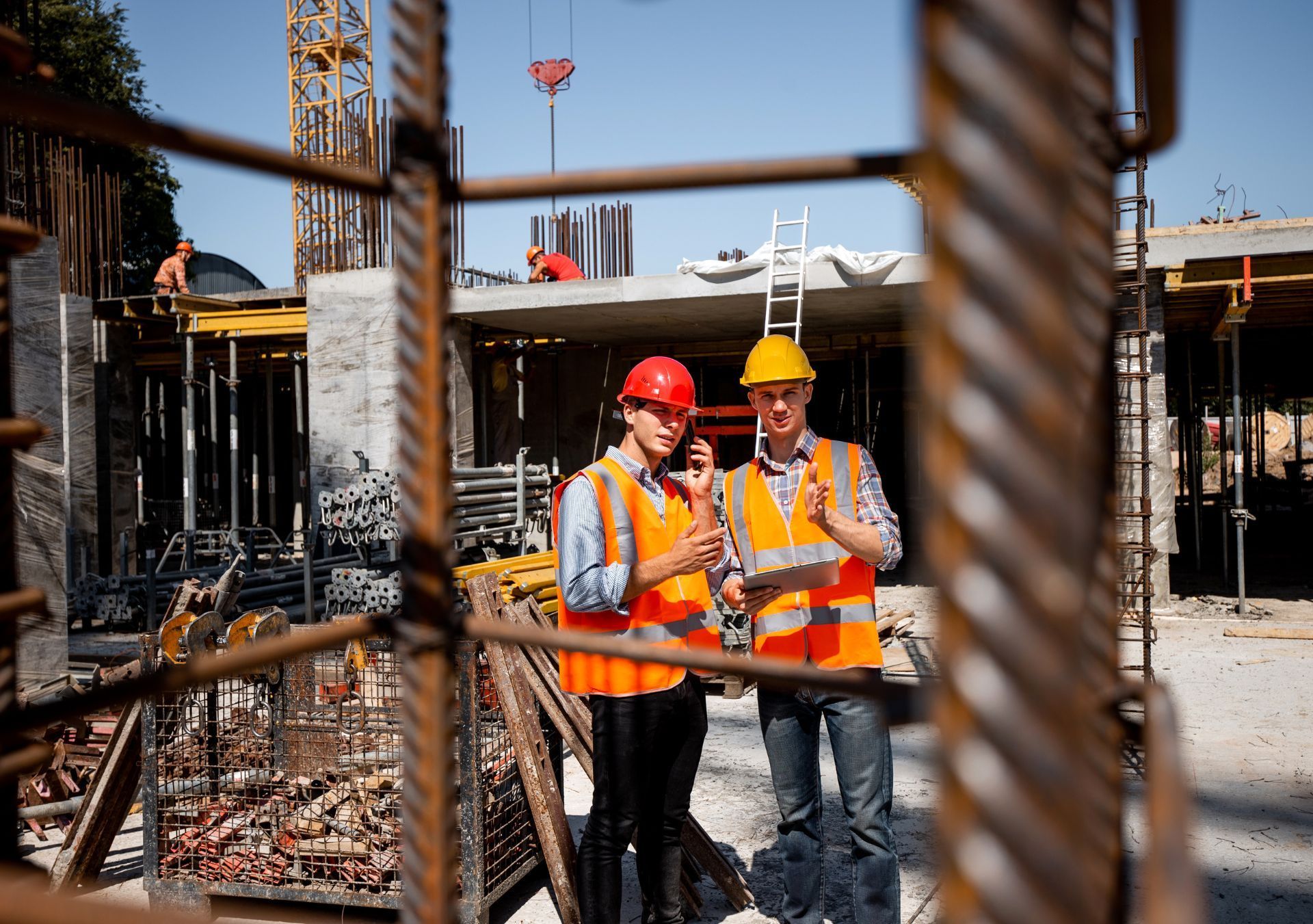Arizona Contractors E&O Insurance
See How We're Different:
or Call Us:(480) 526-3222

Most Common Business Policies
Index
Understanding Errors and Omissions Insurance
Key Benefits of E&O Insurance for Arizona Contractors
Navigating the E&O Insurance Landscape in Arizona
Common Misconceptions About E&O Insurance
How to File a Claim for E&O Insurance
Cost Factors for E&O Insurance in Arizona
Choosing the Right Coverage Limits
Conclusion: The Importance of E&O Insurance for Arizona Contractors
Contact Us
In the construction industry, contractors face a myriad of risks and challenges. One of the most critical aspects of protecting a contracting business is obtaining Errors and Omissions (E&O) insurance. This article delves into the essentials of Arizona Contractors E&O Insurance, outlining its importance, coverage details, and how to navigate the complexities of this insurance type.
Understanding Errors and Omissions Insurance
Errors and Omissions Insurance, often referred to as professional liability insurance, is designed to protect contractors from claims of negligence, errors, or omissions that occur while providing professional services. This type of insurance is particularly vital for contractors who offer specialized services, as it covers the costs associated with legal defense and settlements in case of lawsuits. In an industry where precision and attention to detail are paramount, having this safety net can mean the difference between a thriving business and financial ruin.
The Importance of E&O Insurance for Contractors
Contractors in Arizona operate in a highly competitive environment where mistakes can lead to significant financial repercussions. E&O insurance provides essential protection against claims that may arise from a variety of circumstances, including:
- Failure to deliver services as promised
- Errors in project design or execution
- Miscommunication with clients regarding project specifications
Without E&O insurance, contractors may find themselves financially vulnerable, facing lawsuits that could jeopardize their business and personal assets. This coverage not only safeguards against potential losses but also enhances credibility with clients, demonstrating a commitment to professionalism and accountability. Additionally, many clients now require contractors to have E&O insurance as a prerequisite for securing contracts, making it not just a protective measure but a vital component of a contractor's business strategy.
What E&O Insurance Covers
The coverage provided by E&O insurance can vary based on the policy and provider, but generally includes:
- Legal defense costs associated with claims
- Settlements or judgments awarded to clients
- Claims arising from negligence, errors, or omissions in professional services
It is essential for contractors to thoroughly review their policy to understand the specific inclusions and exclusions, ensuring that they have adequate coverage tailored to their unique business needs. Furthermore, contractors should consider the limits of their coverage, as some policies may have caps that could leave them exposed in the event of a large claim. Engaging with a knowledgeable insurance broker can help navigate these complexities and ensure that contractors are adequately protected against the diverse risks they face in their day-to-day operations.
Moreover, the process of obtaining E&O insurance can also be an opportunity for contractors to evaluate their business practices and identify areas for improvement. By analyzing past projects and potential vulnerabilities, contractors can implement better risk management strategies, which not only minimizes the likelihood of claims but also enhances overall service quality. This proactive approach not only benefits the contractor's bottom line but also fosters stronger relationships with clients, who will appreciate the contractor's commitment to delivering high-quality work and maintaining transparency throughout the project lifecycle.

Key Benefits of E&O Insurance for Arizona Contractors
Investing in E&O insurance offers numerous advantages that can significantly impact the sustainability and growth of a contracting business. Some of the key benefits include:
Financial Protection
One of the most compelling reasons to secure E&O insurance is the financial protection it offers. Legal fees can quickly accumulate, and without insurance, contractors may be forced to pay these costs out of pocket. E&O insurance alleviates this burden, allowing contractors to focus on their projects rather than potential legal battles. Furthermore, in a state like Arizona, where construction projects can often be complex and subject to various regulations, having this financial safety net becomes even more critical. It enables contractors to navigate the intricacies of local laws and client expectations without the constant worry of potential litigation hanging over their heads.
Enhanced Professional Reputation
Having E&O insurance can enhance a contractor's professional reputation. Clients are more likely to trust a contractor who demonstrates a commitment to protecting their interests through insurance. This trust can lead to increased business opportunities and a stronger client base. In addition, a solid reputation can be a powerful marketing tool in the competitive Arizona contracting landscape. When contractors showcase their E&O insurance in proposals and marketing materials, it signals to potential clients that they are serious about their work and prepared to take responsibility for their projects. This proactive approach can differentiate them from competitors who may not prioritize such coverage.
Peace of Mind
Knowing that there is a safety net in place can provide peace of mind for contractors. This assurance allows them to take on projects with confidence, knowing they are protected against unforeseen issues that may arise during the course of their work. Moreover, this peace of mind extends beyond just the contractors themselves; it also reassures their employees and subcontractors. When a contracting team feels secure in their work environment, it can lead to increased morale and productivity. In a fast-paced industry where deadlines are tight and stakes are high, the ability to focus on delivering quality work without the distraction of potential legal repercussions can be invaluable.
While the benefits of E&O insurance are clear, navigating the insurance landscape can be daunting. Here are some steps to consider when seeking coverage:
Assessing Your Needs
Before purchasing E&O insurance, it is crucial for contractors to assess their specific needs. This includes evaluating the types of projects they undertake, the potential risks associated with those projects, and the level of coverage required. Consulting with an insurance professional can provide valuable insights into the appropriate coverage limits and policy options. Additionally, contractors should consider their past experiences with claims and any patterns that may inform their future needs. For instance, if a contractor has previously faced issues with project delays or client disputes, it may be wise to seek a policy that offers robust protection against such scenarios.
Researching Insurance Providers
Not all insurance providers offer the same level of service or coverage options. It is essential to research various providers, comparing their policies, premiums, and customer reviews. Look for insurers that specialize in contractor insurance, as they will have a better understanding of the unique risks faced by contractors in Arizona. Furthermore, networking with other professionals in the industry can yield recommendations for reputable insurance companies. Engaging in local trade associations or forums can also provide insights into which providers have a strong track record for customer satisfaction and reliability, ensuring that contractors make informed decisions.
Understanding Policy Terms
Once a contractor has identified potential insurance providers, it is vital to carefully review the policy terms. This includes understanding the coverage limits, deductibles, and any exclusions that may apply. Pay close attention to the claims process and ensure that the provider has a reputation for efficient claims handling. Additionally, contractors should inquire about any endorsements or riders that can be added to the policy for enhanced protection. For example, some policies may offer
coverage for cyber liability, which is increasingly important in today's digital landscape. Understanding these nuances can help contractors tailor their insurance to better fit their operational needs and provide peace of mind as they navigate their projects.
Common Misconceptions About E&O Insurance
Despite its importance, there are several misconceptions surrounding E&O insurance that can lead to confusion among contractors. Addressing these misconceptions can help contractors make informed decisions about their insurance needs.
Myth: E&O Insurance is Only for Large Contractors
Many contractors believe that E&O insurance is only necessary for large firms or those with extensive projects. However, all contractors, regardless of size, can benefit from this coverage. Even small mistakes can lead to significant financial consequences, making E&O insurance a wise investment for contractors of all sizes. For instance, a minor oversight in project specifications can result in costly rework or legal disputes, which can be financially devastating for a small contractor. By securing E&O insurance, contractors can protect themselves from the unexpected costs associated with claims, allowing them to focus on their work without the constant worry of potential liabilities.
Myth: General Liability Insurance is Enough
While general liability insurance is essential for contractors, it does not cover the same risks as E&O insurance. General liability typically covers bodily injury and property damage, whereas E&O insurance addresses claims related to professional services. Contractors should consider both types of insurance to ensure comprehensive coverage. For example, if a contractor provides design services and a client claims that the design was inadequate, general liability insurance would not cover that claim. E&O insurance steps in to protect contractors from claims arising out of errors in judgment, advice, or services rendered, which can be crucial in maintaining a good reputation in a competitive market.
Myth: E&O Insurance is Too Expensive
While the cost of E&O insurance can vary, many contractors find that the investment is well worth the protection it provides. Additionally, the potential costs of a lawsuit can far exceed the premiums paid for insurance. Contractors should view E&O insurance as a necessary expense rather than an optional luxury. Furthermore, many insurance providers offer flexible payment plans and tailored coverage options that can fit a contractor's budget. By comparing different policies and understanding the value of the coverage, contractors can find a solution that not only protects their business but also aligns with their financial goals. Investing in E&O insurance can ultimately save contractors from significant financial strain and preserve their ability to operate effectively in the long term.
How to File a Claim for E&O Insurance
In the unfortunate event that a contractor needs to file a claim under their E&O insurance policy, understanding the process is crucial. Here are the general steps involved in filing a claim:
Notify Your Insurance Provider
The first step in the claims process is to notify the insurance provider as soon as possible. Most policies require prompt notification of any claims or potential claims. This can often be done via a phone call or through the insurer's online claims portal. It’s advisable to familiarize yourself with your policy's specific notification requirements, as failing to adhere to these timelines can jeopardize your claim. Additionally, documenting the date and time of your notification can be helpful for future reference.
Gather Documentation
Contractors should gather all relevant documentation related to the claim. This may include contracts, correspondence with clients, project details, and any other evidence that supports the claim. Thorough documentation can significantly impact the outcome of the claim. Consider creating a detailed timeline of events leading up to the claim, as this can provide context and clarity to the claims adjuster. Furthermore, collecting witness statements or expert opinions can bolster your case, demonstrating the validity of your claim and the extent of the alleged errors or omissions.
Cooperate with the Claims Adjuster
Once a claim is filed, the insurance provider will assign a claims adjuster to investigate the situation. It is essential for contractors to cooperate fully with the adjuster, providing any requested information and answering questions honestly. This cooperation can help expedite the claims process and lead to a favorable resolution. Keep in mind that the adjuster’s role is to assess the claim objectively, so maintaining a professional demeanor and being transparent about the circumstances can foster a more productive dialogue. Additionally, be prepared to discuss any mitigating factors that may have contributed to the situation, as this can help the adjuster understand the full scope of the issue.
Follow Up Regularly
After filing the claim and cooperating with the claims adjuster, it's important to follow up regularly on the status of your claim. Insurance claims can sometimes take longer than expected due to various factors, including the complexity of the case or the volume of claims being processed by the insurer. By maintaining communication with your insurance provider, you can stay informed about any developments or additional information that may be required. This proactive approach not only demonstrates your commitment to resolving the issue but also helps ensure that your claim remains a priority in the claims process.
Cost Factors for E&O Insurance in Arizona
The cost of E&O insurance can vary widely based on several factors. Understanding these factors can help contractors budget for their insurance needs effectively.
Type of Work Performed
The nature of the work performed by the contractor plays a significant role in determining insurance premiums. Specialized contractors, such as those involved in design or engineering, may face higher premiums due to the increased risk associated with their services.
Business Size and Revenue
Insurance providers often consider the size and revenue of the contracting business when calculating premiums. Larger businesses with higher revenues may face higher premiums due to the potential for larger claims. Conversely, smaller contractors may benefit from lower rates.
Claims History
A contractor's claims history can also impact insurance costs. Contractors with a history of claims may face higher premiums, as they are perceived as higher risk. Maintaining a clean claims history can help contractors secure more favorable rates.

Choosing the Right Coverage Limits
Determining the appropriate coverage limits for E&O insurance is a critical aspect of securing adequate protection. Here are some considerations to keep in mind:
Assessing Risk Exposure
Contractors should assess their risk exposure based on the types of projects they undertake and the potential financial impact of a claim. Higher-risk projects may warrant higher coverage limits to ensure adequate protection against significant claims.
Client Requirements
Some clients may require contractors to carry specific coverage limits as part of their contract. Contractors should be aware of these requirements and ensure that their E&O insurance meets or exceeds these thresholds to avoid contract disputes.
Consulting with an Insurance Professional
Consulting with an insurance professional can provide valuable insights into determining appropriate coverage limits. These experts can help contractors evaluate their unique risks and recommend coverage levels that align with their business needs.
Conclusion: The Importance of E&O Insurance for Arizona Contractors
In the competitive landscape of Arizona's contracting industry, Errors and Omissions insurance is more than just a safety net; it is a vital component of a contractor's risk management strategy. By understanding the intricacies of E&O insurance, contractors can make informed decisions that protect their businesses and enhance their professional reputation.
From assessing individual needs to navigating the claims process, being proactive about E&O insurance can lead to long-term success and stability in the contracting field. As the industry continues to evolve, securing the right insurance coverage will remain a key factor in safeguarding against the uncertainties that come with the territory.
